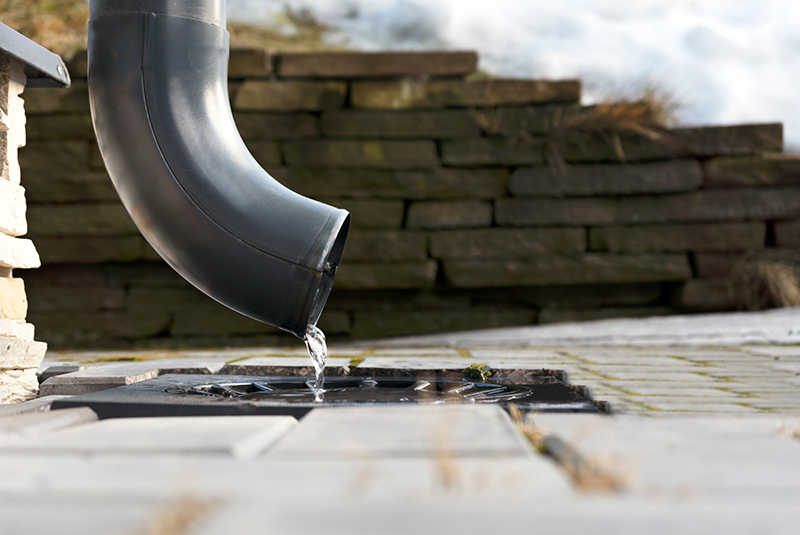Everyone has a comfort zone. So many of us as contractors will always fall back to the projects and services we feel the highest level of expertise in selling and installing. Whenever we embark on any new endeavor, the most important thing we can do is to ask the right questions to ourselves and our customers to reveal the answers to best solve each individual problem.
Drainage is no outlier in this rule. When on a site, some of the most valuable questions you can ask are all below:
Where is the Water Coming From?
Runoff is likely what you are looking to deal with. Always start by looking at the impervious surfaces as the first reference.
- This includes roofs, driveways, patios, walkways and pool decks.
- Other areas that can be a factor could be areas of adjacent lawns and wooded areas that have a slope that leads into your customers’ property.
- Once we have an idea of where the water is coming from, we need to have a measurement of how much area is contributing to the problem. Having the square footage of the space is the number we are looking for.
- We will also need to know what it is running over. Identifying if it is truly impervious like concrete or asphalt or identifying the soil type (Clay, Loam or Sand) will factor into the equation on how to deal with the runoff.
How do you Plan on Capturing the Runoff?
- If the water is coming off roof, do you plan on using direct PVC connections to take it underground or do you plan on putting the water into catch basins?
- If the water is coming off a driveway, pool deck or walkway, can you water at a single point or does using a channel drain along a surface to collect the water?
- If you have a wet spot or standing water in a yard, does it make sense to capture the water and move it someplace else or to create void underground to store the water?
Where will you be Taking the Runoff?
- Is there a logical point to discharge the water at the surface where it will not cause more of a problem for your customer or a neighbor?
- Do you have enough slope to make that happen?
- If you do not have the slope, what can you do to install enough storage under the ground to solve the issue?
- Will you be using corrugated or smooth interior pipe to convey the water from one place to another?
How do you plan to deal with the Outlet of this Runoff?
- Is the flow of water little enough to be handled by a pop up emitter?
- Do you need an open-ended pipe to handle the discharge
- Is the place I am discharging to going to help the problem or create new ones?
- Do I need to disperse the discharge using some type of erosion protection to make sure the area I choose is not damaged?
Self-dialogue and diagnosis will get us to the point where we now need to solve these problems. This is the reason we ask questions, we need to now provide answers. The place to start is with the rational formula. We published an article on this earlier this year and it is easily referenced. This will allow you to size inlets, pipe size and storage for the project. NDS provides some drainage calculators that makes deciphering this info easy. Both of these are linked below.
https://www.ndspro.com/tools-and-calculators/drainage-calculator
https://www.ndspro.com/tools-and-calculators/flo-well-calculator
Another great resource is the local Central team. We are prepared with the answers and inventory you need to solve any drainage issue you are looking to tackle.
If you start with the right questions, you will be able to input the answers to make sure your drainage project will be a success.
Central is your source for all your drainage needs. We are fully stocked with PVC, Dual Wall and corrugated pipe. We also carry catch basins, pop-up emitters, channel drains, sub surface storage and fittings to make sure your project is complete. Regardless of scope and size, Central is your partner in drainage and is always here to help!

